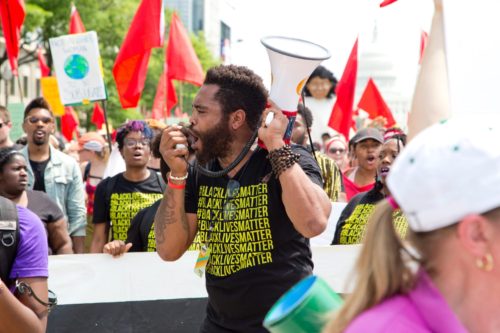People of color have good reason for their concern. Although racial and ethnic minorities comprise 38 percent of the U.S. population, studies have found that environmental racism leaves them disproportionately exposed to air and water pollution as well as death from climate-related natural disasters, such as heat waves and hurricanes.
Challenging Conventional Wisdom
Troy Elias, an assistant professor of advertising who is affiliated with the School of Journalism and Communication’s Media Center for Science and Technology at the University of Oregon, has been working with his colleagues to examine the relationship between life satisfaction and environmental attitudes. Their findings challenge the conventional wisdom that racial and ethnic minorities are less concerned about environmental and sustainability issues than whites.
Elias’ study found evidence that Hispanics, more than blacks and non-Hispanic whites, believe there is more they can do to make a difference when it comes to climate change issues.
“Climate change organizations may be able to make inroads with this group as they continue to become an even greater segment of the American population,” Elias says. “I hope this information will help climate change scientists and journalists better understand the importance of targeting their messages to demographics that are both receptive to them and growing in size.”
According to the Pew Research Center, Hispanics will make up 24 percent of the nation’s population by 2065, while the percentage of whites will decline to 46 percent.
“In the United States, Asian Americans are the fastest-growing demographic, followed by Hispanics,” Elias says. “African Americans, while not growing as quickly, exert tremendous influence on American culture. Collectively, Asian Americans, Hispanics, Native Americans, and African Americans need to be integrated more extensively into the climate change mitigation movement, given their increasing size, buying power, and political clout.”
Media and Climate Change Attitudes
Climate change affects vulnerable communities worldwide. Elias has also been working with colleagues to find out how “ideological” news consumption—whether it’s liberal-leaning, conservative, or politically neutral—in the United States, Nigeria, Costa Rica, and Brazil affect people’s attitudes toward climate change.
Dani Clarke, a graduate student in the school’s new advertising and brand responsibility master’s program, is helping Elias expand his research internationally.
“I think it is important that advertisers influence positive change, but media as a whole can do that as well,” Clarke says. “The United States is such a big influencer, so looking at how we’re dealing with this, how it affects other places and how they’re dealing with it individually and through the media is really important.”
Climate change hits close to home for Clarke, who is from Florida, and for Elias, who hails from Trinidad and Tobago in the Caribbean. Both areas are experiencing rising tides, flooding, and increasing susceptibility to extreme hurricanes.
“I grew up around very different attitudes regarding policy and media coverage (of climate change),” Clarke says. “I think a lot of people’s jobs and the economy of those areas intersect with how we handle climate change and the policies that may hurt the industries but will protect the planet.”
From Futurity






